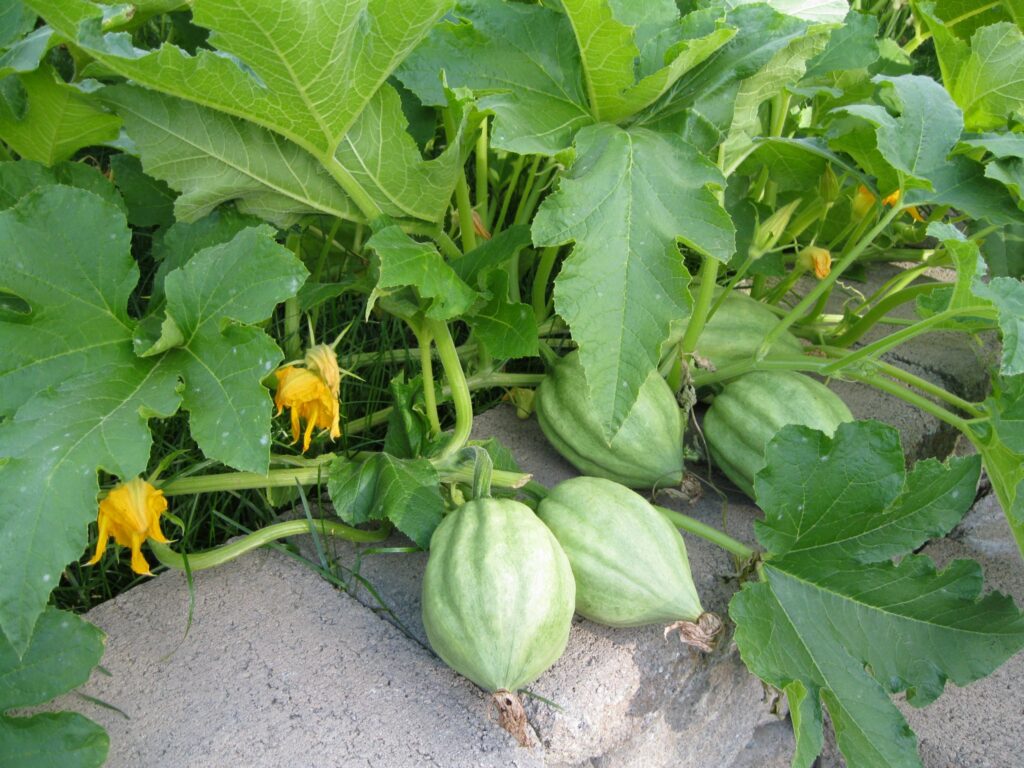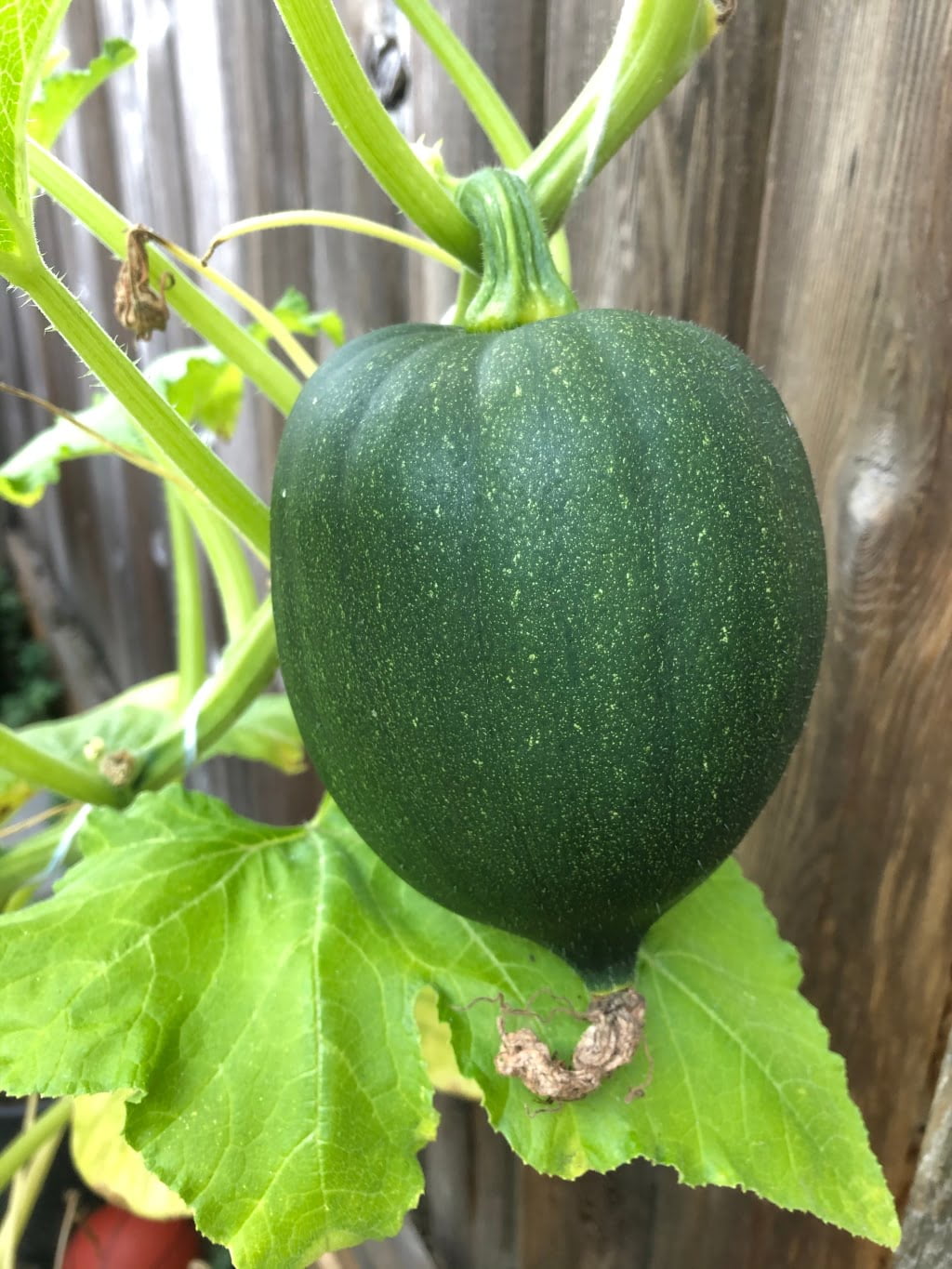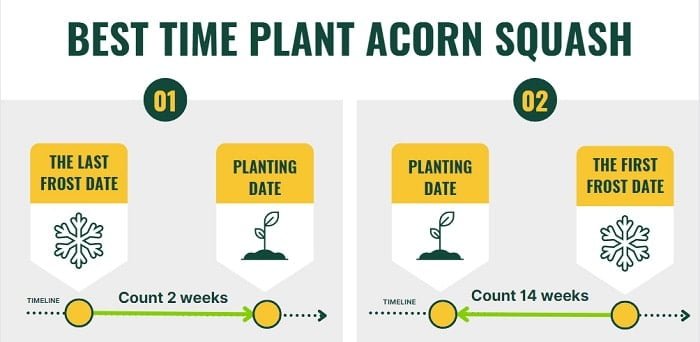Are you eager to grow your own delicious acorn squash? If so, you may be wondering when the ideal time is to plant this savory vegetable. Timing is everything when it comes to successful gardening, and planting acorn squash is no exception. In order to maximize your yield and enjoy a bountiful harvest, it is important to understand the best time to sow your acorn squash seeds. By following a few simple guidelines, you can ensure that your acorn squash plants thrive and bring an abundance of mouthwatering flavors to your dinner table. So, let’s explore the optimal time to plant acorn squash and start your journey towards a fruitful garden.
When is the best time to plant acorn squash?

Understanding acorn squash
Before determining the ideal planting time for acorn squash, it is crucial to have a good understanding of this delicious vegetable. Acorn squash, scientifically known as Cucurbita pepo, is a winter squash that belongs to the Cucurbitaceae family. It is named after its distinctive acorn-like shape and has a sweet, nutty flavor. Acorn squash is rich in essential nutrients like vitamin A, vitamin C, potassium, and dietary fiber, making it a popular choice for healthy meals.
Factors to consider when planting acorn squash
Several factors need to be taken into consideration when planning to grow acorn squash successfully. These factors include hardiness zone, average frost date, growing season length, length of maturity, soil drainage, sunlight requirements, spacing, companion planting, disease and pest prevention, and a harvesting timeline.

Determining the climate suitability
Acorn squash thrives in warm climates, and it is crucial to assess the climate suitability before planting. The first step is to determine your hardiness zone, which indicates the regions where certain plants are likely to flourish. Acorn squash generally grows well in zones 4 to 11, but specific varieties may have different requirements.
In addition to the hardiness zone, understanding your region’s temperature fluctuations is also important. Acorn squash prefers temperatures between 60°F and 75°F (15°C to 24°C) during the day and around 50°F to 60°F (10°C to 15°C) at night. Extreme temperature fluctuations can cause stress to the plants and affect overall growth.
Lastly, identifying the average frost date in your area is crucial because acorn squash is sensitive to frost. Planting too early can result in frost damage, while planting too late can reduce the plant’s yield.
Sowing acorn squash seeds
Acorn squash can be grown either by starting seeds indoors or by directly sowing them outdoors. Starting seeds indoors allows for an early start and can help extend the growing season. Sow the seeds in biodegradable pots about 2-4 weeks before the last expected frost date. This gives the seedlings enough time to establish before being transferred to the garden.
For direct sowing, wait until the soil has warmed and there is no longer a risk of frost. Plant the seeds about 1 inch deep and ensure a spacing of approximately 3-4 feet between hills. Each hill should have two plants, eventually leaving the stronger seedling once they start to grow.

Preparing the soil for planting
Acorn squash thrives in well-draining soil that is rich in organic matter. Start by testing the soil’s composition and pH levels. Acorn squash prefers a pH level between 6.0 and 7.0. If the soil pH is too acidic or alkaline, you can adjust it accordingly using soil amendments.
Improving soil fertility is essential for optimizing growth. Add compost or well-rotted manure to the soil a few weeks before planting to increase nutrient levels. Amending the soil texture can also be beneficial, particularly if the soil is heavy clay. Incorporating organic matter, such as compost or peat moss, will promote better drainage.
Clearing the planting area of weeds and debris is crucial in preparing the soil. Weeds compete with the acorn squash for nutrients and space, so it is important to remove them before planting.
Best location for planting acorn squash
Choosing the right location for planting acorn squash can significantly impact its growth and productivity. Acorn squash requires full sun exposure, meaning it needs at least 6-8 hours of direct sunlight every day. Ensure that the chosen spot receives ample sunlight and is not shaded by tall trees or structures.
For gardeners with limited space, container gardening can be a great option. Use large containers with drainage holes and fill them with well-draining soil. Remember to regularly water and fertilize the plants as container-grown plants may require more frequent watering.
For those who prefer raised beds, consider constructing one for your acorn squash plants. Raised beds allow better control over soil fertility, drainage, and pests. Fill the raised bed with a mixture of garden soil and compost or other organic matter.
Vertical gardening is another alternative for growing acorn squash in limited space. By utilizing trellises, cages, or fences, you can train the vines to grow vertically. This method also promotes better air circulation and easier access for maintenance.
Lastly, consider the location’s exposure to strong winds. Acorn squash plants have large leaves, and strong winds can cause damage or breakage. Planting them in an area with some natural wind protection, such as against a fence or near other taller plants, can help mitigate this risk.

Choosing the right variety of acorn squash
When selecting an acorn squash variety, consider factors such as flavor, texture, disease resistance, and size. Some common varieties include ‘Table Gold’, ‘Autumn Delight’, ‘Taybelle PM’, and ‘Honey Bear’. Each variety has its own unique taste and texture, ranging from nutty to sweet.
Disease-resistant varieties can be a wise choice to prevent common diseases such as powdery mildew and vine borers. Check the seed packets or consult with local gardening experts to find out which varieties are best suited for your specific region and potential diseases.
Additionally, keep in mind the size of the acorn squash variety you choose. Smaller varieties, such as ‘Honey Bear’, are perfect for individuals or small families, while larger varieties may be more suitable for sharing or preserving.
The optimal temperature for planting acorn squash
Acorn squash is sensitive to cold temperatures and thrives in warm weather. The optimal temperature range for planting acorn squash is between 60°F and 75°F (15°C to 24°C) during the day, and around 50°F to 60°F (10°C to 15°C) at night. Temperatures outside this range can hinder germination and overall growth.
During colder months, protecting the plants from frost is essential. Consider using frost blankets or row covers to shield young plants from frost. These protective measures can help extend the growing season and maximize the yield.

Other important planting considerations
To ensure successful acorn squash planting, several other factors should be taken into account:
Growing from seedlings vs. transplanting: While starting from seeds allows for more control over the entire growing process, some gardeners prefer purchasing seedlings from a local nursery. Transplanting seedlings can help save time and effort, especially for growers with limited indoor space or a shorter growing season.
Proper watering techniques: Acorn squash plants require consistent and deep watering to thrive. Water the plants deeply once or twice a week, depending on weather conditions. Aim to keep the soil evenly moist throughout the growing season. Avoid overwatering, as it can lead to root rot and other plant diseases.
Crop rotation practices: To prevent soil nutrient depletion and minimize the risk of disease buildup, avoid planting acorn squash in the same spot year after year. Practice crop rotation by switching the location with other plant families, such as beans or tomatoes, every year.
Monitoring for pests and diseases: Acorn squash can be vulnerable to pests like squash bugs, cucumber beetles, and aphids. Regularly inspect the plants for signs of damage or infestation and take appropriate measures, such as using organic insecticides or implementing companion planting strategies.
Harvesting at the right time: The ideal time to harvest acorn squash is when the fruits reach their full size and the skin turns dark green or orange, depending on the variety. Use a sharp knife or pruning shears to cut the stem, leaving a small portion attached to the fruit. Proper harvesting ensures maximum flavor and storage life.
Storing acorn squash: Acorn squash can be stored for several months if handled properly. Choose squash with a firm skin and store them in a cool, dry place with good air circulation. Avoid stacking them on top of each other to prevent bruising. Check the stored squash regularly for any signs of rot and use the damaged ones first.
By considering these tips and following the recommended planting guidelines, you can increase the chances of a successful acorn squash harvest and enjoy the bounty of this delicious winter vegetable. Happy planting!



